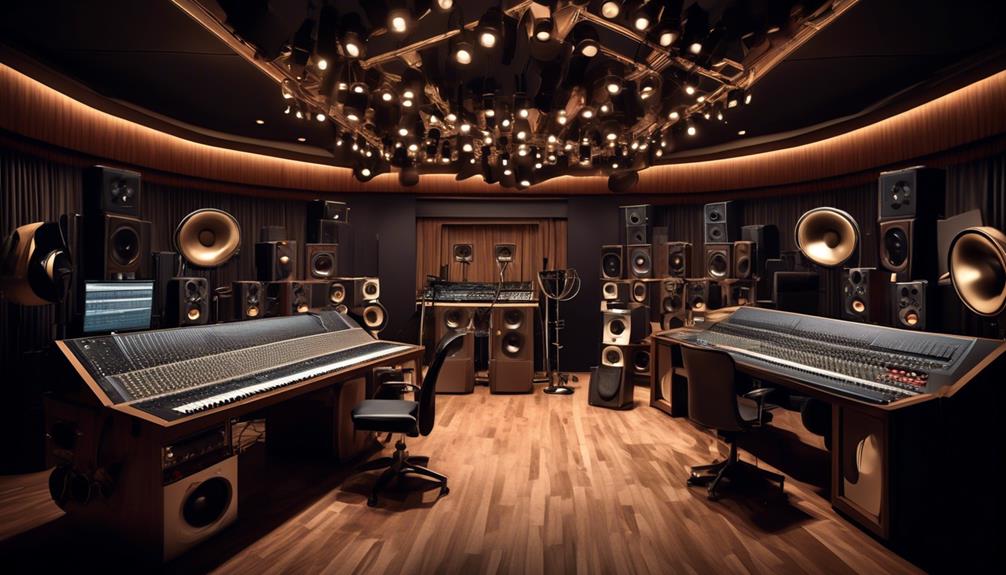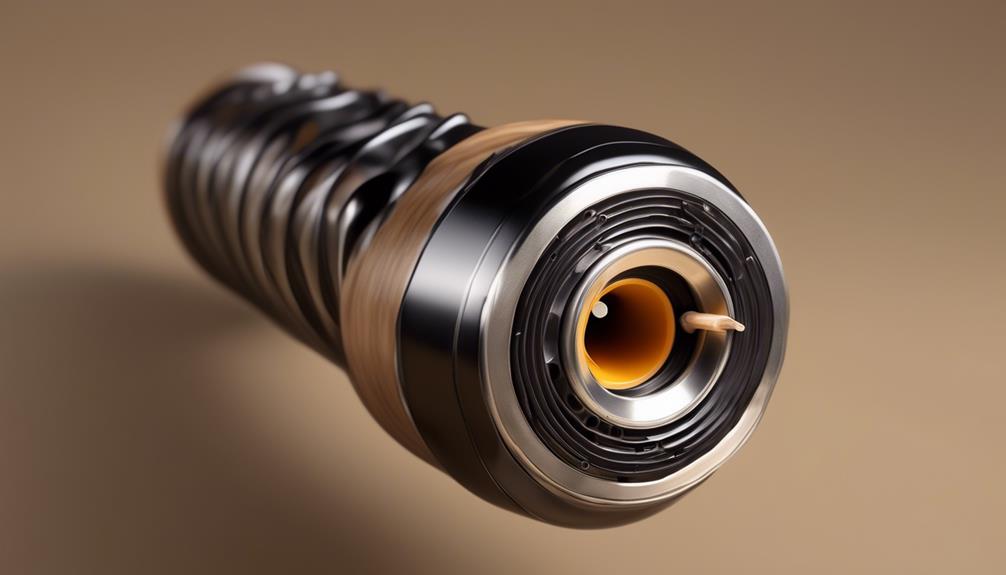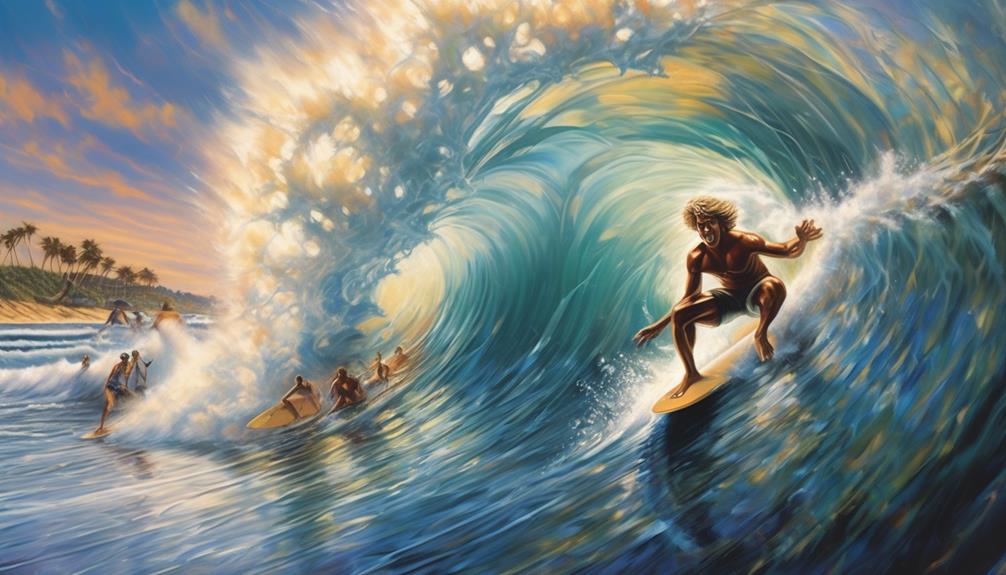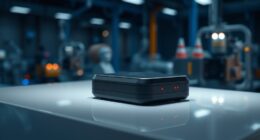Do you believe that studio recording only involves working in a soundproof room with expensive equipment? Think again. Field recording introduces a unique aspect to the audio production process. Whether it’s capturing the gentle rustle of leaves in a forest or the powerful roar of a waterfall, field recording pushes us beyond the studio’s comfort zone and into the untamed, unpredictable realm of sound.
But what exactly does it entail, and how can it elevate the quality of our recordings? Let's explore the untapped potential of field recording and how it shapes the sonic landscapes we love to immerse ourselves in.
Key Takeaways
- Field recording equipment essentials include audio recorders, headphones, additional microphones, wind protection, stands, grips, cables, and memory cards.
- Techniques for successful field recording include setting gain levels properly, utilizing headphones to monitor audio levels, capturing the essence of sound by immersing oneself in the environment, being patient and attentive, and understanding the natural sound effects present in each location.
- Utilizing field recordings in production can enhance the sonic landscape, create an immersive auditory experience, add a unique dimension to music production, and require attention to noise reduction techniques for seamless integration.
- Notable field recording artists such as Chris Watson, Francisco López, and Annea Lockwood have shaped the field of field recording with their unique styles and expertise.
Field Recording Equipment Essentials
When embarking on field recording, it's essential to equip ourselves with a set of specialized tools and gear to ensure high-quality audio capture in diverse environments.
Field recording equipment includes:
- Audio recorders
- Headphones
- Additional microphones
- Wind protection
- Stands
- Grips
- Cables
- Memory cards
The recommended starting format for field recording is 24-bit WAV with a sample rate of 44.1kHz to capture the nuances of natural sound effects.
Popular audio recorder options for field recording include:
- Tascam DR-05X
- Smartphones
- Zoom H4n Pro
- Sound Devices MixPre-6 II
These options provide versatility in capturing sounds in the field.
Microphone options for field recording range from shotgun microphones to specific models like RDE NTG-1, which deliver clear and concise recordings.
Wind protection essentials are crucial to minimize wind noise, and they include windshields and blimps, which play a vital role in saving post-production editing time.
Equipping oneself with the right recording equipment ensures that field recordings are captured with precision and clarity, allowing for the creation of immersive sonic experiences.
Techniques for Successful Field Recording

Exploring the techniques for successful field recording builds upon our understanding of the essential equipment and gear required for capturing high-quality audio in diverse environments.
To achieve successful field recordings, we need to focus on two crucial aspects:
- Setting Gain Levels: Properly setting gain levels is essential for capturing clear and distortion-free sound. Utilize headphones to monitor the audio levels and make adjustments as needed to avoid clipping or overly quiet recordings.
- Capturing the Essence of Sound: To capture unique sonic experiences, it's important to immerse oneself in the environment and understand the natural sound effects present. This involves being patient, attentive, and creative in finding ways to capture the natural soundscapes that make each location special.
Utilizing Field Recordings in Production
Utilizing field recordings in production requires a thorough understanding of how to effectively integrate diverse audio sources to enhance the overall sonic landscape of a project. By incorporating natural sound effects and recordings to create an immersive auditory experience, producers can elevate the quality and depth of their music production. To achieve this, a collection of sounds captured using a recording device during field recording sessions can be utilized. These recordings include ambient noises, wildlife sounds, urban ambiences, and other natural sounds that can add a unique dimension to the music.
| Equipment | Description | Benefits |
|---|---|---|
| Audio Recorder | Tascam DR-05X, Zoom H4n Pro, and Sound Devices MixPre-6 II are popular choices for field recording. | High-quality recordings |
| Microphone | Shotgun microphones and RDE NTG-1 are popular choices, providing detailed recordings. | Superior sound capture |
| Wind Protection | Windshields and blimps nullify wind noise, saving post-production editing time. | Improved sound isolation and clarity |
Incorporating field recordings into music production requires careful attention to noise reduction techniques to ensure a seamless integration of natural sounds with the rest of the audio elements.
Notable Field Recording Artists

Noted for their significant contributions to the field of field recording, several artists have gained recognition for their innovative and evocative approaches to capturing natural and environmental sounds. Here are some notable field recording artists:
- Chris Watson
- Known for his immersive and evocative nature recordings, capturing sounds in their natural environment.
- His work often includes bird sounds and other natural elements, providing a rich and authentic soundscape.
- Francisco López
- Recognized for his experimental and abstract approach to field recordings, exploring the boundaries of sound art.
- López's recordings often delve into the world of field recording, incorporating a wide range of natural sound effects to create unique sonic experiences.
- Annea Lockwood
- Acclaimed for her pioneering work in capturing environmental and natural sounds, creating unique sonic experiences.
- Lockwood's recordings often focus on nature sounds and the use of audio recorders to capture the essence of the environment.
These artists have significantly contributed to the world of field recording, each bringing their own unique style and expertise to the art of recording sounds in natural environments.
Overcoming Challenges in Field Recording
Field recording presents numerous challenges that demand careful planning, specialized equipment, and adaptability to varying environmental conditions.
Weather conditions, such as wind, extreme temperatures, and precipitation, can significantly impact the success of the first field recording. To overcome this challenge, it's crucial to consider wind protection and shock mount systems to minimize unwanted noise interference.
Additionally, being prepared for limited power supply in outdoor recording situations is essential. This requires the use of battery-powered equipment, extra batteries, and efficient power management.
Accessibility to equipment and supplies can be limited in remote locations, emphasizing the need for thorough preparation and self-sufficiency. Planning for the accessibility of replacements items is also important.
Moreover, preparation and adaptability are key in field recording, as music stores or rental companies may not be readily accessible. Therefore, thorough preparation, adaptability, and self-sufficiency are critical for successful field recording sessions.
Frequently Asked Questions
What Is the Difference Between Field Recording and Studio Recording?
In field recording, we utilize portable audio recorders, additional microphones, wind protection, stands, cables, and memory cards. Environmental challenges like wind and ambient noise require wind protection and careful mic placement.
Sound isolation is critical for capturing clean audio. Post-production processes are minimized through on-site adjustments and natural acoustics.
Remote locations and weather considerations necessitate adaptability and planning. Field recording differs from studio recording in its equipment needs, environmental challenges, and on-site adjustments.
How Do You Record in the Field?
When recording in the field, we use portable equipment to capture outdoor recording, live performances, and environmental sounds in remote locations.
Our on-location setup includes essential gear like audio recorders, microphones, and wind protection to adapt to outdoor acoustics.
We focus on capturing natural soundscapes, ensuring precise positioning and setting optimal gain levels to preserve the sound essence.
This approach allows us to capture the authentic atmosphere and ambiance of the environment.
What Are Different Types of Field Location Recording?
Different types of field location recording involve remote setup, requiring essential equipment like audio recorders, microphones, and wind protection. Environmental challenges such as wind and background noise must be overcome. Sound isolation and outdoor acoustics impact the recording quality.
Location scouting is crucial for optimal results. A mobile setup facilitates natural reverb capture. On-site mixing ensures immediate assessment.
Mastering these elements leads to successful field location recording.
What Does It Mean to Say Field Recordings Capture Ambient Sounds?
Field recordings capture ambient sounds by utilizing audio equipment to capture natural environment soundscapes, including environmental noises, wildlife sounds, and urban settings.
This outdoor recording process allows for the capture of unique and unpredictable sounds in remote locations, adding authenticity and depth to audio productions.
It involves capturing the essence of a specific location, providing a rich sonic experience that isn't easily replicated in a studio setting.
Conclusion
In conclusion, field recording offers a unique and creative approach to capturing audio outside of the studio environment.
Did you know that 80% of sound effects used in film and television are recorded in the field? This statistic highlights the importance of field recording in producing realistic and immersive soundscapes for media.
With the right equipment and techniques, field recording can elevate the quality and authenticity of audio production across various industries.










